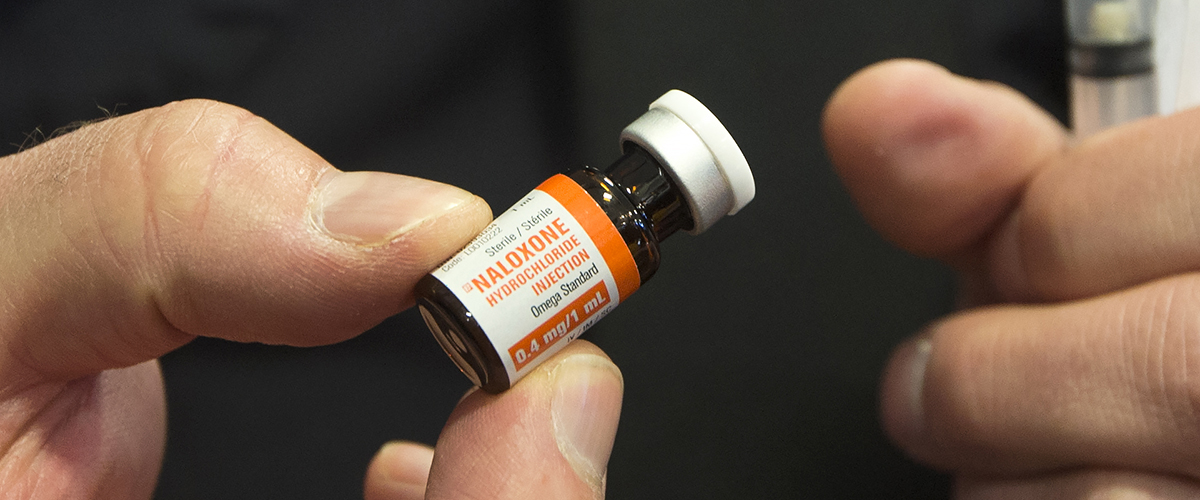Community Engagement COVID Policing January 31, 2019
In the past month, the COVID-19 crisis has collided with another American epidemic: mass incarceration. The results have been nothing short of disastrous. Eight of the top ten largest outbreaks in America are in correctional facilities, according to data on COVID-19 hotspots compiled by the New York Times. Over 14,000 incarcerated people have tested positive in state and federal prisons, and countless more infections have likely gone undetected due to lack of testing. Tragically, COVID-19 continues to spread behind bars, since inadequate healthcare and overcrowded, unsanitary conditions have turned correctional facilities into a “petri dish” for the virus.
To protect incarcerated individuals and corrections officers alike, some jurisdictions are taking promising steps to reduce correctional populations, including granting early release to some incarcerated individuals. Jurisdictions must pair these crucial early release efforts with reforms aimed at keeping people from entering jails and prisons in the first place – starting with modifications to policing practices.
Police are the gatekeepers to the criminal justice system, and as first responders, they are vulnerable to the spread of COVID-19. As of late April, nearly 4,900 New York Police Department officers had tested positive for the coronavirus, and 37 officers had tragically lost their lives. And in Detroit, over 1,000 officers – roughly 35 percent of the Detroit Police Department – have spent time in quarantine since the outbreak began. To protect officers and residents alike, jurisdictions must ensure that policing practices are in line with the latest public health guidelines for physical distancing and other health precautions.
Policing for the 21st Century
By rethinking policing practices, city officials can curtail jail admissions – and critically, can help safeguard law enforcement officers and the communities they serve. Police departments are making critical changes, like minimizing police stops and custodial arrests, in response to the spread of the pandemic. These urgent reforms are also aligned with 21st century policing principles, according to Ron Davis, the former head of the Office of Community Oriented Policing Services at the U.S. Department of Justice.
“Police must now apply the public health model of “do no harm first” in making decisions, from arrests to uses of force,” said Mr. Davis in an interview with the Center for American Progress. “Making arrests must transition from being a common tool used by law enforcement to becoming literally a tool of last resort.”
It’s also not true that incorporating physical distancing or making other changes to policing practices will jeopardize public safety, Mr. Davis said.
“The police alone cannot make a community safe. And we have learned over the years that simply adding more police does not equate to more public safety. It takes an entire community working with the police to sustain long-term public safety,” he said. “So, as we decrease the physical footprint of law enforcement in the community, it doesn’t automatically mean that public safety is compromised or that crime is going to go up.”
Instead, cities must also invest in holistic strategies for preventing and reducing crime, from youth engagement to mental health services to diversion programming. “In short,” Mr. Davis explains, “we must reimagine policing so that it relies less on physical interventions and more on community partnerships.”
Recommendations for policing during the COVID-19 pandemic
With these goals in mind, the Center for American Progress released the following recommended policy changes that police departments are adopting to protect officers and prevent the further spread of COVID-19 behind bars and within the community:
- Drastically reduce the number of police stops and custodial arrests. Law enforcement agencies must decrease enforcement actions for lower-level offenses, focusing instead on the most serious cases. Custodial arrests should be reserved only for the small subset of individuals who pose a clear risk to public safety. Several jurisdictions have taken already steps to limit custodial arrests, including Washington, D.C., where Metropolitan Police Department Chief Peter Newsham has expanded the types of offenses that are eligible for citation and release. Likewise, the Philadelphia Police Department postponed arrests for many categories of non-violent crimes, including all narcotics offenses, burglary, prostitution, vandalism, and others.
- Limit the amount of calls for service that officers respond to in person. Police departments must limit officers’ exposure to the virus by reducing in-person responses for nonemergency issues. Officers should respond in-person only when there is an imminent threat to public safety or in instances where investigation or evidence collection cannot be delayed. In cities like Syracuse, NY, for example, law enforcement has temporarily shifted protocols for responding to calls for service to emphasize online and over-the-phone incident reporting.
- Prioritize responding to and preventing domestic violence. Even during the pandemic, not everyone is safer at home – including survivors and those at risk of domestic violence. Law enforcement agencies need to train officers to recognize the warning signs and understand the increased risk of intimate partner violence in the context of the current crisis. Agencies should prominently feature hotline numbers and other resources from local service providers alongside all public guidance related to COVID-19. In Minnesota, the state Department of Public Safety instructed local law enforcement agencies that residents who are not safe in their homes must be allowed to relocate, without risking a violation of the governor’s executive order. Likewise, the city of Chicago has partnered with ride-sharing services provide free rides for those who contact the Illinois Domestic Violence Hotline, helping to ensure that those who need to relocate are able to do so.
- Obtain and distribute personal protective equipment (PPE) to every officer to use while on duty. Law enforcement agencies must provide officers with personal protective equipment to protect their health and prevent additional spread of the virus. In cities such as Austin, Texas, and Philadelphia, for example, police officers are required to wear face masks while on duty. Agencies must also provide access to COVID-19 testing and trainings on personal safety precautions, such as physical distancing, sanitizing procedures, and recognizing the symptoms of COVID-19. In addition to providing PPE kits to patrol officers, the Los Angeles Police Department provided guidance for officers on using this equipment and maintaining safe interactions with the public.
- Consider contracting with local hotels to allow officers to isolate. Jurisdictions may need to provide safe lodging for first responders, who are at heightened risk of exposure to COVID-19 and may be required to distance themselves from their household and colleagues. The city of Seattle, for example, contracted an entire hotel to provide accommodations for first responders and other essential city employees, including police, firefighters, emergency medical services (EMS), and transportation workers.


